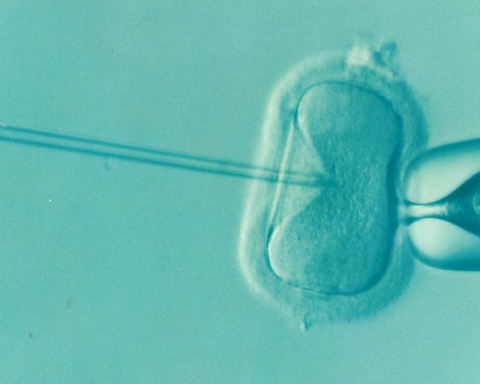The Indian pharmaceutical industry is on a growth trajectory path and will be in the top 10 global markets in value term by 2020. Some of the growth drivers include higher disposable income, improvement in healthcare infrastructure and improved healthcare financing schemes. According to a report by PwC, the Indian pharma industry is growing at a CAGR of more than 15%. With this growth rate, the companies need to rethink their business strategy and adopt new business models. The pharmaceutical companies will have to focus on improving operational efficiency and productivity for long-term growth. The pharmaceutical companies are also expanding operations in developing countries through joint ventures and acquisitions as growth in the developed countries has slowed over the years. As these companies continue to focus on the next emerging markets, they need to develop new commercialization approaches for product regulators and users.
Intellectual Property Protection
In developing countries, pharmaceutical companies still struggle to enforce IP rights due to weak IPR protection. Some of the emerging markets view IP as a way for foreign players to restrict access to critical medicines to their population, thus leading to monopoly and higher prices of drugs. On the other hand, the government also lacks implementation of effective measures for the protection of foreign companies IP holdings that requires compulsory licensing or refuses to enforce IP protection. In these emerging markets, unless there is adequate IPR protection, the pharma companies need to adapt their drug portfolios and commercialization strategies to suit local markets. The foreign players need to push the government and solve the issues relating to access-to-treatment issues and convince the developing countries to enforce their IP claims. In a bid to increase foreign direct investment and technology transfer, many emerging economies are taking steps to tighten their IP regime. This change will protect foreign players to protect their intellectual property and forge joint ventures and licensing deals with their counterparts in emerging regions. The move will also lead to more investments in research and development (R&D) and enterprises have to face fewer market barriers to launching a new product, thus leading to more investments in offshore manufacturing plants. From an R&D perspective, pharma companies are able to commercialize effectively by focusing on the level of performance and another driver of R&D return such as the rate of innovation and harness the power of analytics in R&D decision making. The companies are also developing patient-centric products or services tom improve the health of customers. Due to increased global competition, many drug manufacturers are looking to expand beyond the home turf and export their products to other countries, keeping in mind the high trade barriers.
The pharma sector is highly regulated and product commercialization can only be undertaken after years of compliance and meeting the required standards. In developing countries, the government regulates the prices of certain essential medicines which impacts the branded drug manufacturers over generic drugs as the latter market their drugs at relatively lower prices. While in developed countries, the government rewards incentives for companies who invest huge sums in R&D and promote innovation through premium pricing of certain drugs and reduce prices of less-innovative generic drugs to maintain desired levels of profitability. However, pricing pressure will continue to be a major concern for pharmaceutical companies. According to a report by Deloitte, the global generics market was valued at USD 168 billion in 2013 and is projected to grow at USD 283 billion by 2018, growing at a CAGR of 11 percent. The generic drugs account market account for more than 70 per cent and 50 per cent in US and Europe, respectively. This is expected to increase as consumers prefer to buy cheaper medicines but sales constraints and price controls are also impacting the revenues and profitability of generic drug manufacturers.
Patent and R&D in developing countries
In the pharmaceutical industry, the patent is equivalent to the product. The patenting process in the pharma industry is different as compared to other industries such as computers and electronics. The patenting activity in this industry starts from the clinical stage till the product reaches the market. As the pharma products can easily be infringed by local manufacturers with little capital investment, patent exclusivity is the only way to protect and receive a return on investment. Unlike technologies industries where inventions are not disclosed until they are marketed, which enables investors to delay patent filings and can maximize the effect of the patent term i.e. 20 years from the filing of the patent application. The pharmaceutical industry is regulated by the government and regulators and has to ensure the safety and efficacy of the product sold to consumers. Many pharmaceutical companies invest huge sums in clinical trials so that the product meets industry standards and can be commercialized to reap high returns on investment. Due to the lengthy time period between patent filing and marketing of the product, the companies get shorter patent exclusivity cycle. However, this problem has been addressed in the developed countries which permit the pharma companies to apply for an extension of the patent term and compensate the necessary time period for the inability to launch the product due to market interventions and safety regulation. In most cases, the time period permitted doesn’t match the time lost in the inability to market the drug. For instance, the USPTO extends only half the time period consumed by the regulatory approval process and maximum effective patent term of 14 years. Additionally, the legislation restricts the exclusive right of use and prevent generic drug manufacturers from using the product for testing and developing alternative while the patent in effect. In developed countries, pharma companies have increased their investments in the research and development and the pharma industry has grown 2X as fast as the economy at large. With the advancement in the medical research, many commercial enterprises have taken advantage of the effective patent system by gaining a monopoly in the markets and sold drugs at higher prices.
Most of the developing countries adopt weak IPR regime as the economies depend on agriculture, low-wage manufacturing, etc. These countries lack the institutions and policies that encourage them to invest in R&D and commercialize inventions. Additionally, the majority of the patent offices are understaffed, thus, make it difficult to provide requisite services to inventors. Due to complex formalities and cumbersome process, many companies/inventors face difficulty in obtaining patent protection in the developed markets such as the US, the UK, and Europe. The weak IPR protection has forced local drug manufacturers to infringe products produced in developed markets. In some countries, the local companies have formed strong associations to oppose the introduction of patents for pharmaceutical companies and local manufacturers can dominate the market and restrict foreign patenting of pharma products. Unlike the developed countries, the inventor(s) are rewarded for their contribution towards innovation and have sophisticated policies in place to enforce IP rights. According to WIPO, Over 95% of all patent filings in the world are by nationals of OECD member countries. The TRIPS agreement has given a mandate to developing countries to adopt adequate IPR regime to foster innovation and boost economic growth. This move has further encouraged pharma companies to invest in developing countries and protect their inventions. Patents play a pivotal role in the pharma industry by protecting inventions from potential infringers and also provide a profitable return on investment. With the presence of strong patent protection regime, pharma companies produce drugs that will meet patient needs and further invest in R&D to make drugs successful and can be marketed to reap long-term benefits. Much of the research that occurs in the developing countries is financed by the public sector as compared to private companies, and as a result, they are more focused on manufacturing generic versions of the drug.
The long way ahead
In the pharmaceutical sector, patents equal the product and protect the investment incurred in R&D and clinical trials. The patent protection for the pharma products is essential as the drugs can be easily imitated by potential infringers or generic manufacturers with a fraction of investment required for R&D and clinical testing. The cost required to produce a pharmaceutical product is high as compared to investments made by the private sector in pharmaceutical innovation and have been disproportionate to products meeting the needs of the patients in the developed countries in which strong patent protection means a market free of price controls. The weak IPR protection in developing countries has made it difficult for the foreign entities to set up R&D centers and promote innovation. The lack of patenting inventions further suppresses the development of commercial enterprises that focus on alleviating the disease burdens in developing countries. It also discourages commercial R&D needed to produce and market drugs at prices that consumers in the countries can afford. However, many developing countries have the capacity to develop research-intensive pharmaceutical industries that can produce drugs directed to the diseases. Having said that, an adequate IPR protection is needed for these industries to grow and thrive.







